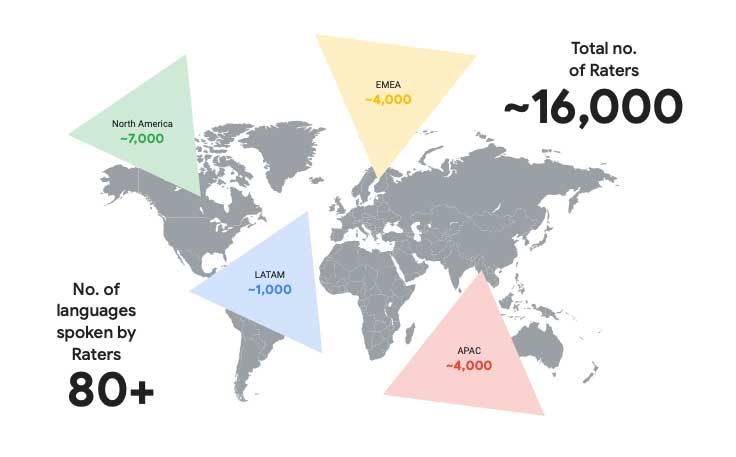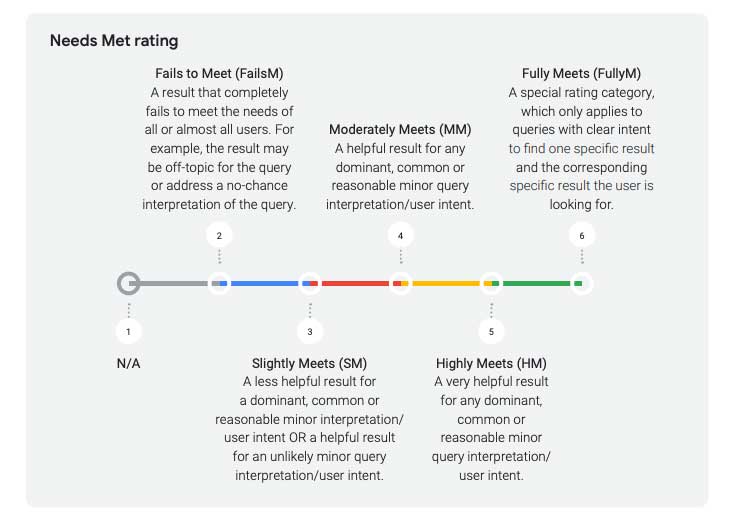Google regularly updates its algorithms to deliver the most relevant, helpful search results, focusing on high-quality content. The update rewards “needs met” content while penalising SEO-driven, low-value material.
During and after the rollout, many sites saw significant traffic drops, losing up to 90%, while others benefited. Some industries were hit harder than others. We will address how the update impacts various sectors and offer tips to help your content align with Google’s standards.
What was the Google Helpful Content Update?
The Helpful Content Update, launched in 2022, prioritised user-focused content over SEO-driven material. It targeted websites using tactics like keyword stuffing, thin content, or AI-generated material that compromised user experience. Sites relying on these practices saw ranking drops, while those offering valuable, high-quality content gained visibility.
This update also utilised insights from Google’s Search Quality Rater Guidelines, which is where human raters in different places around the world evaluated the content quality on its relevance, usefulness, and E-E-A-T (Experience, Expertise, Authoritativeness, and Trustworthiness). The feedback from raters helped Google fine-tune its algorithms to better reward valuable, well-researched content and penalise sites that failed to meet user intent.

Affected Websites
Not all websites were affected equally by the Helpful Content Update. Websites that produce low-quality, repetitive, or AI-generated content are the most vulnerable. However, certain industries are more susceptible due to the nature of their content:
- Niche Blogs and Affiliate Sites: These sites often rely on product reviews or affiliate marketing. If they lack original content or real value, they are especially prone to penalties. Additionally, many blogs have lost appeal as users now prefer other platforms like social media for product reviews.
- YMYL Content: Websites that fall under the “Your Money or Your Life” category, such as health, financial, and legal sites, face stricter scrutiny. Google requires high levels of expertise, authoritativeness, and trustworthiness (E-E-A-T) from these sites.
- AI-Generated Content: Sites that rely heavily on AI for content generation are often penalised unless there is substantial human oversight. Google’s algorithms are trained to detect content that feels unnatural or lacks depth.
Why does it matter?
Google’s Helpful Content Update marks a lasting shift toward prioritising user experience. In the past, websites could manipulate rankings with thin, keyword heavy content and backlinks from link farms, all without providing real value. This update raises content standards, rewarding sites that offer well-researched, informative material that genuinely benefits users.
Tips for Creating Helpful Content
Creating helpful content isn’t just about avoiding penalties; it’s about providing genuine value to your audience. Here are some actionable tips to help you create content that ranks well while delivering a great user experience.
Understand Search Intent
To create helpful content, you need to understand what your audience is searching for and why. One of Google’s rating system is also based in a point scale of whether the content is meeting the users’ need. Are they getting what they were looking for? This is called search intent, and it can be categorised into four types:
- Informational: The user is looking for information on a specific topic.
- Navigational: The user is trying to find a specific website.
- Transactional: The user wants to buy something.
- Commercial Investigation: The user is comparing products or services.
Tip: Before writing, ask yourself what the user is looking for and what they hope to achieve from the search. Use tools like Google Search Console or Google Analytics to see what keywords bring people to your site, and tailor your content to meet their needs.

Focus on E-E-A-T (Experience, Expertise, Authoritativeness, Trustworthiness)
Google uses the concept of E-E-A-T to assess the quality of content, especially for YMYL (Your Money or Your Life) topics. Your content should demonstrate your expertise, experience, and trustworthiness in the subject.
- Expertise: Make sure your content is written by or features experts. If you’re running a financial blog, for example, have articles written by professionals with credentials in the field.
- Authoritativeness: Build authority by citing reputable sources and linking to authoritative sites.
- Trustworthiness: Ensure your site is secure (HTTPS), transparent (i.e. include author bios)
Tip: Add author bios to your pages, especially on topics requiring expert knowledge. Highlight your or the authors credentials and experience to build trust with your readers and Google.
Use High-Quality Visuals and Graphics
Google values content that enhances the user experience with visuals such as images, infographics, and videos. Including these elements can not only improve your rankings but also keep visitors on your page longer.
Tip: Use original visuals whenever possible. Stock photos are acceptable, but Google favours content that is unique and relevant to your content. For example, a website with reviews about running shoes should include photos of the actual shoes, rather than generic stock images.
Incorporate Multimedia
Using multimedia – like videos, podcasts, or interactive elements – can improve user engagement. Google increasingly values content that goes beyond text, particularly when it comes to tutorials, product reviews, or how-to guides.
Tip: If you have the resources, invest in creating video content. For example, if your site is a running blog, produce workout tutorials that guide users through post run stretch exercises.
Reduce Ad Disruptions
Ever visited a site bombarded with pop-up windows that slow down your computer and force you to close them before accessing the content? Google penalises websites that clutter the user experience with intrusive ads, pop-ups, and distractions. This not only frustrates visitors but also leads to higher bounce rates and lower rankings. Respect your site visitors by providing the information they’re after without placing obstacles in their way.
Tip: Keep your ads to a minimum, and ensure they don’t disrupt the content flow. Use clean and responsive layouts, and avoid pop-ups that cover the entire screen. Providing a distraction-free reading experience is key to holding users’ attention and increasing time spent on the page.
Conclusion
Google’s helpful content update highlights the shift towards prioritising user-focused, valuable content. Websites still relying on keyword-stuffing, thin content, or AI-generated material are at risk of losing visibility. Focus on understanding your target users’ search intent, prioritise E-E-A-T, and produce the best content possible. Use visuals and videos (if resources allow), and regularly update your content.
